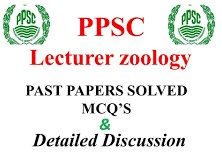1. The amphibians and the represent the two major branches of the tetrapod lineage
A. reptiles
B. birds
C. temnospondyls
D. amniotes
A. it is homologous to feathers
B. it is a dermal structure
C. it is found in all mammals
D. it is possessed by all endotherms
A. 28,000
B. 5,000
C. 10,000
D. 50,000
A. keratin ossicles
B. calcareous ossicles
C. keratin spicules
D. calcareousspicules
A. thyroxine
B. vasopressin
C. secretin
D. adrenaline
A. sexual reproduction
B. hormonal action
A. natural selection
B. mutation
7
A. carbon dioxide, methane, chlorofluro carbons and oxides of nitrogen
B. ethane, oxides of nitrogen, carbon monoxide and chlorofluro carbons
C. carbon monoxide, methane, chlorofluro carbons and oxides of nitrogen
D. carbon dioxide, oxides of nitrogen, ethane and chlorofluro carbons
8
A. mantle
B. epidermis
C. gastrovascular cavity
D. odontophore
9
A. nitrogen
B. carbon
C. potassium
D. free energy
10
A. archenteron
B. blastocoel
C. blastocyst
D. morula
11
A. anapsid
B. diapsid
C. biaspid
D. synapsid
12. Which of the following phyla of animals is exclusively marine
A. protozoa
B. porifera
C. echinodermata
D. mollusca
13. A normal green male Maize is crossed with albino female. The progeny is albino because
A. trait for a albinism is dominant
B. the albinos have biochemical to destroy plastids derived from green male
C. plastids are inherited from female parent
D. green plastids of male must have mutated
14. Sertoli cells are found in
A. liver
B. seminiferous tubules
C. pancreas
D. gut
15. The sum total of the populations of the same kind of organisms constitute
A. colony
B. genus
C. species
D. community
16. A molluscan shell is made of three layers arranged from the outside to the inside
A. periostracum, prismatic layer, nacreous layer
B. mantle layer, prismatic layer, periostracum
C. nacreous layer, periostracum, mantle layer
D. none of these
17. Which one of the following can achieve protection and conservation of biodiversity
A. eco-development
B. biospherereserve
C. national park
D. game sanctuary
18. Lamarck’s “Theory of Organic Evolution” is based upon
A. effect of environment
B. use and disuse of body parts
C. inheritance of acquired characters
D. all of these
19. Myxoedema in adults is caused due to
A. hyperthyrodism
B. deficiency of thyroid hormone
C. overproduction of PTH
D. deficiency of PTH4. “
20 The animals of colder countries have small ears, short tail and limbs to avoid moreloss of heat” is the theme of
A. Allen’s law
B. Dollo’s law
C. Gause’s law
D. Cope’s Law
21. Testosterone is secreted by
A. sertoli cells
B. leydig cells
C. spermatocyte
D. histiocyte
22. Changing from a bilaterally symmetrical larval form to a radially symmetrical adult involves relocation of various parts. In this process, the left side becomes the
and the right side becomes the
A. aboral surface, oral surface
B. anterior surface, posterior surface
C. dorsal surface, ventral surface
oral surface, aboralsurface.
23. The class name Myxini, or the hagfishes, refers to their
A. lack of eyes
B. unique circulatory system
C. production of slime
D. parasitic lifestyle
24. The earliest therians (mammals) evolved in the
A. Permian
B. Triassic
C. Cretaceous
D. Cenozoic
25. The development of limbs probably aided the first amphibians in
A. finding mates
B. swimmin
C. moving between bodies of water
D. none of these
26. Which of the following is odd one
A. cockroach, spider, silver-fish
B. whale, bat,lizard
C. star-fish, sea-cucumber, sea-urchin
D. cray-fish, cuttle-fish hag-fish
27. ABO blood group system is due to
A. multifactorinheritance
B. incompletedominance
C. multiple allelism
D. epistasis
28. In human beings, the eggs are
A. microlecithal
B. macrolecithal
mesolecithal
29. Pyramid of numbers deal with number of
A. species inarea
B. sub-species in a community
C. individuals in a community
D. individuals in a trophic level
30. The morphogenetic movement change the hollow spherical blastula into a/an
A. embryonic disc
B. gastrula
C. morula
D. neurula
31. The dominant second trophic level, in a lake ecosystem, is
A. benthos
B. plankton
C. zooplankton
D. phytoplankton
3
A. caudofoveata
B. solenogastres
C. monoplacophora
D. polyplacophora
A. ecologicalequivalents
B. ecotypes
C. ecologicaldominants
D. diverse species.
34. Diabetes mellitus is due to deficiency of
A. LH
B. FSH
C. glucagon
D. insulin
35. Which of these classes is characterized by no anus, no suckers, articulated ossicles, and a madreporite on the oral surface
A. crinoidea
B. ophiuroidea
C. asteroidea
D. echinoidea
36. The derivation of the genus name assigned to the invasive marine lampreys found in the Great Lakes refers to their
A. ability to be parthenogenetic
B. rasping mouthparts
C. holding on to rocks in a stream
D. parasitic nature
37. Unlike reptiles, the first mammals were characterized by
A. continuously replaced teeth
B. only one set of teeth during the lifetime
C. continuously growing teeth
D. two sets of teeth during the lifetime
38. Some amphibians have _ , which are pigmented cells in the skin
A. chromatophores
B. osteoblasts
C. miracidia
D. none of these
